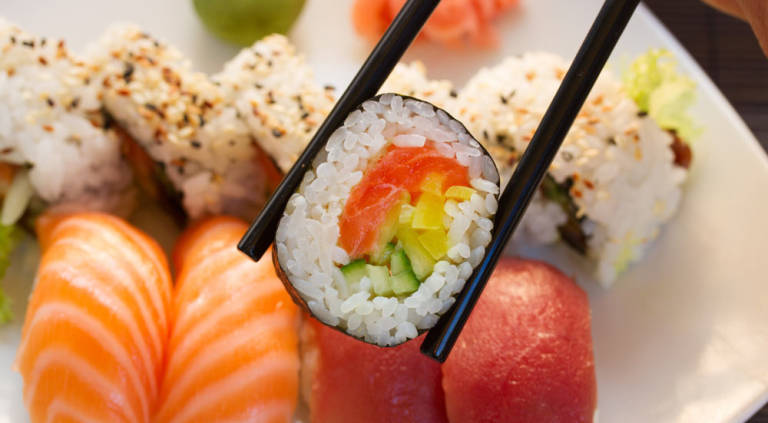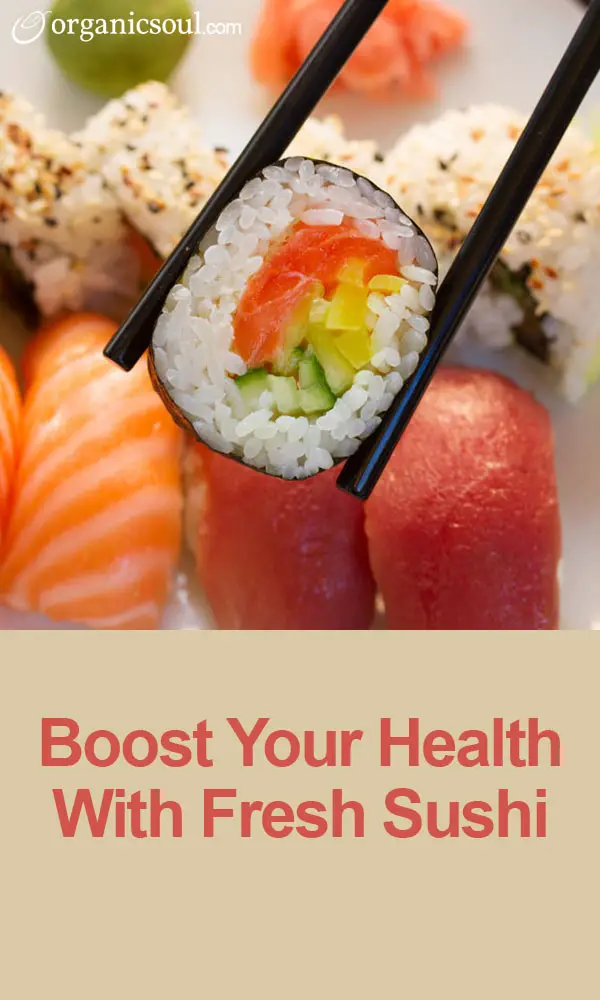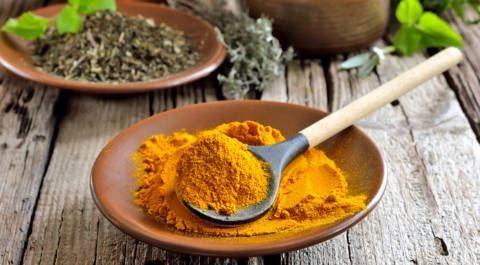
Steadily growing with popularity, sushi is becoming a staple of many health-foodists’ diets. If you’re able to find a “safe” sushi spot, you’ll be able to get a healthy source of proteins, minerals, complex carbohydrates, and a number of vitamins, all rolled up into a delicious package. While there are some dangers associated with sushi, many benefits outweigh the potential harm.
Like Organic Soul on Facebook
A Quick History
While there is some disagreement about the specific time sushi originated, most sources reference its inception around 4th century BC, then an introduction to Japan around the 7th or 8th century. However, the modern form we enjoy today was only reintroduced and popularized in 1820. In Tokyo, sushi chefs began perfecting the “fast food” approach to making sushi, and it slowly began being a delicacy people all over the world sought out.
The Benefits
Sushi is a pretty basic food – thin, toasted seaweed sheets called Nori, white rice, a few veggies, and raw fish. Nori is high in vitamin A, B-complex, Niacin, and Vitamin C. According to Health Guidance, it also aids in digestion. The rice, while admittedly not as healthy as brown rice, is still a great source of energy. This complex carbohydrate is low in fat and sodium free, making it a guilt-free choice for dieters.
With whatever fish you choose -say, salmon, tuna, or eel – you’ll be receiving a great source of protein and minerals. Even the soya sauce, if naturally fermented, can be healthy for you. According to Health Guidance, consuming soya has been linked to a lower propensity to develop breast cancer as well as fewer menopausal symptoms. It is ripe with protein, low in saturated fats, and is cholesterol free, so any heart healthy eaters can sleep well night. Remember: use the naturally fermented style!
The add-ons to sushi are also healthy. Ginger, for one, has been linked to lowering the risk and slowing the develop of cancers, providing heartburn relief, reducing inflammatory pain, and may even help reduce migraines. Wasabi, in the same spirit, is packed full of isothiocyanates, or sulfur compounds that “exhibit antimicrobial, anticancer, anti-inflammatory, anti stroke, and anti heart attack properties.”
While I wouldn’t suggest sushi as a panacea to all health problems, it’s good to know it has some researched benefits.
Some Dangers
That’s not to say sushi is ‘all-okay’. You need to be selective where you eat sushi, and you need to know if you have food allergies or a weak stomach. Because most (but not all) sushi contains raw fish, there is a chance of catching parasites or other food-borne illnesses. Also, sushi generally tends to have high levels of mercury that can build up over tim
e, which is why pregnant women are advised not to eat sushi containing shark, swordfish, or marlin.
Generally, you can avoid these dangers if you know the sushi place handles their fish correctly and if they have a good local source of fish. Probably the best way to get healthy, chemical free sushi is to support more stringent standard on dumping in the ocean.
Once you find a safe sushi joint, go enjoy at your own liking. I personally only go a few times a month, just to keep it an exciting and exotic food. Whenever I do go, however, I’m consistently pleased with my meal, and always feel fresh and invigorated by the dynamic palette of flavors, colors, and presentations.
Go experiment; you may be hooked after just one bite!













